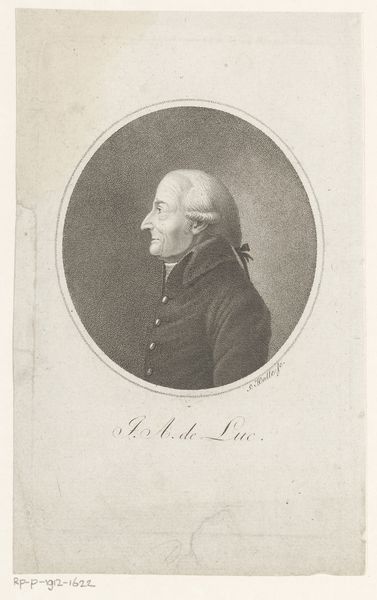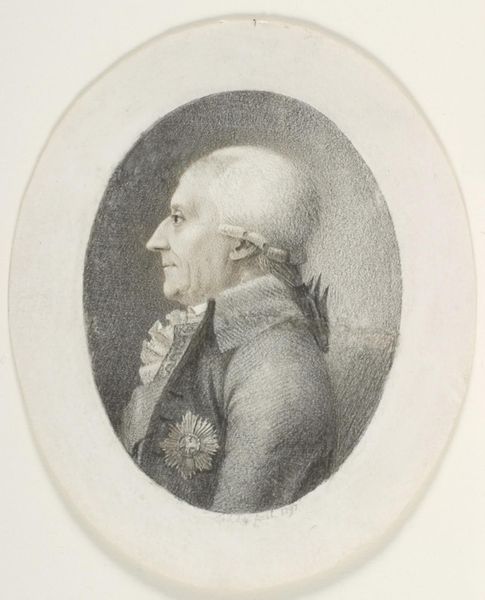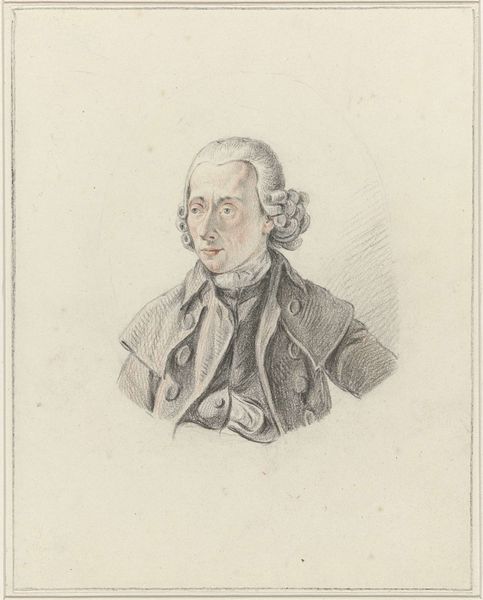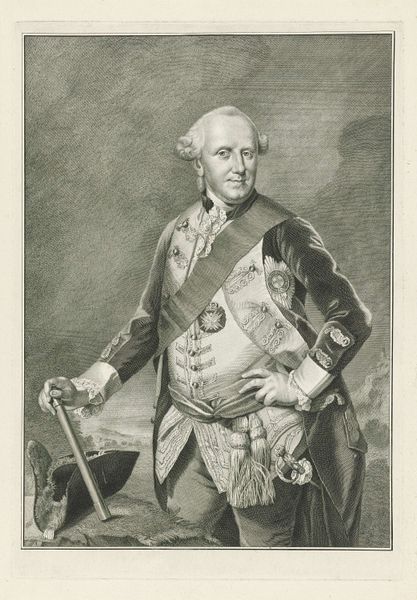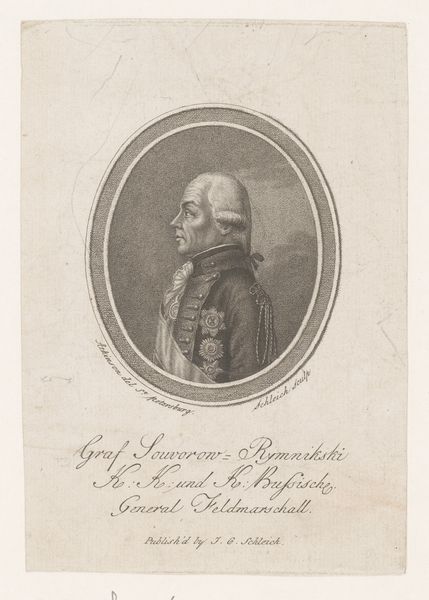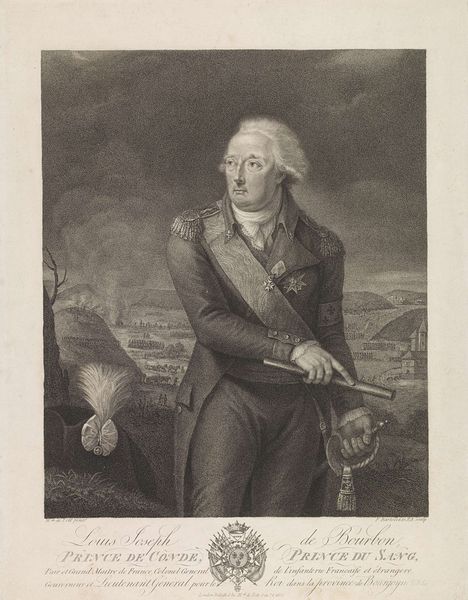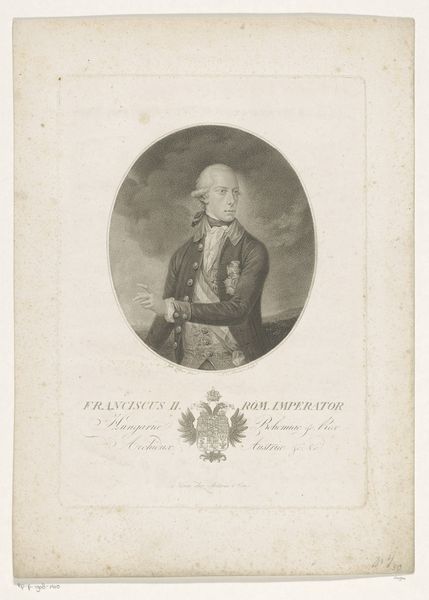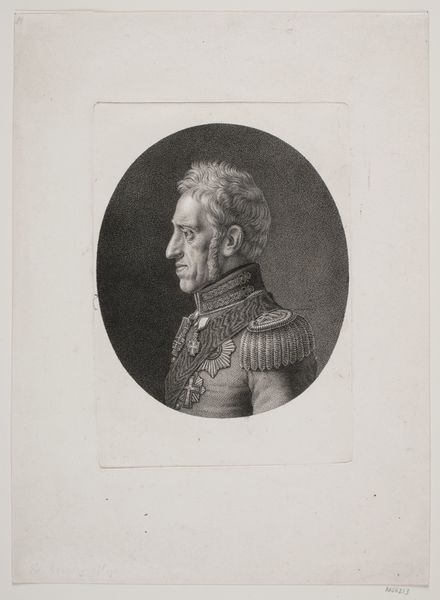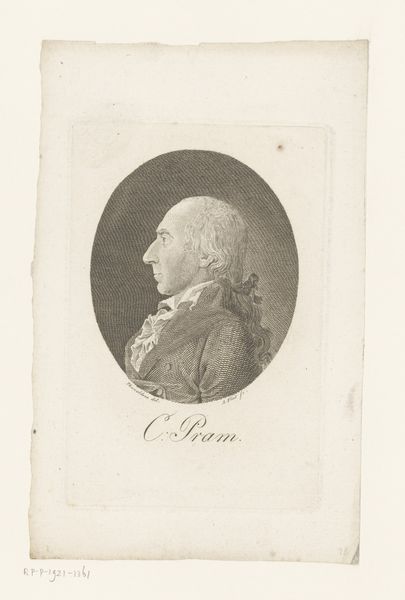
drawing, print, pencil, engraving
#
portrait
#
pencil drawn
#
drawing
#
neoclacissism
# print
#
pencil sketch
#
old engraving style
#
pencil drawing
#
pencil
#
pencil work
#
engraving
Dimensions: height 307 mm, width 244 mm
Copyright: Rijks Museum: Open Domain
Curator: Alright, let’s talk about this arresting portrait of Karel Hendrik van Nassau-Siegen. It was created in 1794 by Franziska Schöpfer, utilizing the delicate mediums of pencil and engraving. What’s your initial take? Editor: Austere. Bleak, almost. The severe profile combined with those flat greys projects a real…reserve. Though, maybe that’s the intent with these sorts of neoclassical images. They are never, to me anyway, cozy. Curator: Yes! It really leans into that Neoclassical coolness. Observe how the figure is contained within that perfect oval, a classical compositional technique if ever there was one. Schöpfer is making deliberate choices here. Editor: It’s that contained form that really holds my eye; the shading behind gives him some weight in the picture plane, but that line keeps him isolated and… well, sketched. Curator: Precisely! Note also the incredibly fine lines of the engraving, almost like a whisper of graphite. It’s fascinating how this piece balances the rigid conventions of portraiture with such delicate, almost ethereal execution. Editor: Do you think there’s any narrative embedded here, something about the sitter? It seems so precise that the weight of each pencil stroke might actually tell us more about him and, possibly, his historical weightiness, than simply “documenting” his presence. Curator: That’s a tempting thought. Given the context, though—the man's position, the era—perhaps we should see him mainly as a symbol of power, presented with calculated simplicity. He is stripped bare of any superfluous adornment apart from his clothing and medals to highlight the essence of leadership, as he and his time understood it. Editor: Hmmm, a blank slate. But I feel that maybe his essence IS his medals. I guess my problem here might be about my discomfort in separating out artifice and essence in general—as if we aren't all artifice all the way down? Curator: (Laughs) A fair point. So, what final note does this portrait leave you with? Editor: An unsettled feeling. It is a masterfully executed image and, now that I get the intention behind its lack of affect, I see it's more engaging. Thank you. And you? Curator: A renewed respect for the artist's technical skill, and an awareness of how art shapes perceptions of power—how art performs its own duties, I guess.
Comments
No comments
Be the first to comment and join the conversation on the ultimate creative platform.
